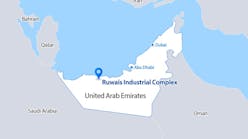Italy’s Eni S.p.A. (“Eni”) recently purchased substantially all of the Gulf of Mexico offshore oil and gas assets of Dominion Exploration & Production Inc. (together with its parents, affiliates and subsidiaries, collectively “Dominion”) through Eni’s US affiliate, more than tripling Eni’s holdings in the Gulf.
To the casual observer of the upstream oil and gas industry, the deal has captured some notoriety given the large price garnered for Dominion’s offshore business unit– $4.757 billion dollars. The more scrutinizing in the industry have analyzed the transaction from an economic perspective, that is, in terms of dollars against commercial reserves.
Despite this analysis, little has been said of the potential synergies between the acquirer and the particular assets acquired. Different firms with disparate specialties and risk profiles might exploit the same assets in different ways. Eni is well-suited for the deepwater Gulf of Mexico because it is what one MMS report has called a “demand side company,” that is in a cycle of aggressive acquisition and has, in its history, rarely, if ever, been overly risk-averse.1 Dominion’s offshore assets were especially suitable for Eni, and Eni is uniquely positioned to exploit its newfound assets.
The transaction
On April 27, 2007, Eni and Dominion executed a purchase agreement, pursuant to which Eni agreed to acquire substantially all of the Gulf of Mexico offshore exploration and production assets of Dominion for $4.757 billion. The assets acquired by Eni included estimated proved and probable equity reserves of 222 million barrels of oil equivalent, the majority of which are located in the deepwater portion of the Gulf of Mexico.2 The $4.757 billion purchase price included $680 million attributable to exploration assets, and a number of stable development prospects, both on the shelf and in the deepwater portions of the Gulf.
In addition to reserves, Eni acquired interests in several large host facilities, including the Dominion-operated “Devils Tower” spar. Devils Tower, located on block 773 of the Mississippi Canyon Area on the Gulf of Mexico Outer Continental Shelf, was a prospect originally operated by Mariner Energy. After acquiring the field from Mariner and its co-owners, Dominion commissioned the building and emplacement of the Devils Tower spar, which is the world’s deepest spar (in 5,610 feet of water).3 It handles production from the Devils Tower, Triton (5,373 feet of water), and Goldfinger (5,423 feet of water) prospects, located int he Mississippi Canyon Area.
Devils Tower, located on Mississippi Canyon Block 773, is the world’s deepest spar.
Photo courtesy of Dominion
Other major production handling facilities related to the acquired assets are located at Rigel, 17 Hands (including the Rigel/ 17 Hands subsea production system), Independence Hub (San Jacinto, Spiderman, and Q are three of the original 10 “anchor fields” tied back to Independence Hub), Thunder Hawk, Front Runner, and Neptune (the first spar installed in the Gulf of Mexico). Devils Tower and Rigel/17 Hands, together with Front Runner (3,330 feet of water), San Jacinto (7,850 feet of water), Q (7,925 feet of water), Spiderman (8,087 feet of water), and Thunder Hawk (5,724 feet of water) account for around 70% of the proved and probable reserves acquired from Dominion.4
The asset package acquired by Eni is large enough and diverse enough (a number of shelf assets were included) to challenge the management capabilities of any exploration and production company. However, Eni has historically managed a large and diverse asset base that has required both above-ground and below-ground capabilities. Its presence in the US that preceded this acquisition included some of the most challenging deepwater discoveries in the Gulf of Mexico. Eni’s ability to draw on the expertise and capital available to an integrated company and its history put it in decidedly limited company in the Gulf.
Eni Petroleum
Agip (Azienda Generale Italiana Petroli) was founded in 1926 as the Italian state oil company. Enrico Mattei, perhaps the most important name in Eni’s history, was appointed provisional administrator of Agip in 1945 and charged with liquidating many of its properties. This was halted in the late 1940s with the discovery of major natural gas reserves in the Po Valley in northern Italy.
In 1953, Eni (Ente Nazionale Idrocarburi) was established by the amalgamation of a number of different Italian companies, including Agip. Mattei was appointed its first chairman. Described by one historian as “a bold swashbuckler, a condottiere, a throwback to the earlier days of Napoleonic entrepreneurs,” Mattei (and, by extension, Eni) was, to put it mildly, not risk averse.
This was with good reason, as Mattei and Eni struggled against existing integrated firms with well established interests in the status quo.5 Because Mattei was excluded from existing joint ventures, Eni’s focus shifted to exploratory operations, often in nontraditional areas.
Agip (Agip was originally Eni’s exploration and production entity, but, as Agip has since changed its name to Eni, the two are referred to interchangeably herein) drilled “Gelamare 21,” the first offshore well in Europe, off the coast of Sicily in1959. It was involved in development in the Gulf of Suez in 1961 and the North Sea and Persian Gulf in 1964. In the latter half of the 20th century, Agip was involved in a number of international deepwater exploration, production and transportation projects, including the Transmed and Blue Stream pipelines (the latter of which involved laying a gas pipeline beneath the Black Sea at depths of up to 6,800 feet), the Alquila deepwater offshore field in the southern Adriatic, and the Kashagan field in the Caspian Sea. In April of 2007, another Eni entity, EniNeftegaz, acquired “Lot 2” in the Yukos liquidation for $5.83 billion.
Eni entered the US in 1962 with the incorporation of Agip USA Inc., but did not truly gain a foothold in the Gulf of Mexico until the late 1970s. With the acquisition of British Borneo in 2000, Eni significantly increased the number of deepwater prospects in which it held an interest. Prospects acquired included K2, Morpeth, and Allegheny. Thus, on the eve of the Dominion purchase, Eni had significant US and, specifically, Gulf of Mexico ownership and operatorship experience to bring to bear along with its international exploration and production expertise. In short, it was poised for just this sort of acquisition.
Synergies with Dominion’s asset package
With its purchase of Dominion’s offshore business, Eni has significantly increased its presence in an area in which it has a great deal of expertise at a time when investments in the deepwater Gulf of Mexico are arguably becoming more attractive.6 Growth in demand has of late proven relatively robust in the face of geopolitical disruptions. Conversely, investments in the deepwater Gulf of Mexico are less susceptible to above ground risks than growth opportunities in other countries, making investments in the Gulf of Mexico more appealing.7
The increase in subsea development projects and the concomitant proliferation of “host” facilities such as Devils Tower, Independence Hub, and Thunder Hawk, to which multiple subsea production systems can be tied back, have improved the economic viability of deepwater Gulf of Mexico projects.8 The recent approval by the Minerals Management Service of the use of High-Integrity Pressure Protection Systems (HIPPS) will further aid in the development of what would otherwise be marginal deepwater fields by allowing (among other things) longer tiebacks to host facilities.9
The multiple host-facility interests acquired by Eni, combined with the potential use of HIPPS and Eni’s significant offshore exploration experience (including the laying of long pipelines in areas less forgiving than the Gulf of Mexico) gives the $680 million attributed by Eni to exploration assets the feeling of money well spent.
Conversely, Eni is well suited to these assets. It is well capitalized, has a history of aggressive exploration and development, and the engineering and geophysical know-how to carry out a successful exploration and development program. In this way, both the exploration and development assets may actually be more valuable in Eni’s hands than they were in Dominion’s.
It would be a fair argument, at any rate, to say that the emphasis placed by Eni on exploration assets signals that Eni is probably more interested in exploration than other bidders on the same assets, and therefore less risk-averse. Further, Eni has obtained from Dominion a base of experienced employees who are familiar with both the assets and Eni’s new partners therein, which should substantially shorten the learning curve as Eni integrates the former Dominion assets into its structure and operations.
Conclusion
On July 3, 2007 Eni announced that it had closed the purchase of Dominion’s offshore assets. To those familiar with the deepwater Gulf, the press release trumpeted the growth of Eni into one of the largest players in the world of exploration and production in the Gulf of Mexico. Including the assets acquired from Dominion, Eni now holds 462 Gulf of Mexico leases, and expects to produce approximately 110,000 barrels of oil equivalent per day.
Ultimately,what can be said of this transaction at this moment is that it made sense for Eni from an operational, historic, and economic perspective. Given the synergy between Eni’s history and experience, the nature of the assets and the promise of the market at the time that Eni has chosen to dramatically expand its Gulf of Mexico operations, it is easy to see why.
References
1. Kaiser and Pulsipher, Capitol Investment Decisionmaking and Trends: Implications on Petroleum Resource Development in the U.S.Gulf of Mexico 6 (OCS Study MMS 2006-064, October 2006) [hereinafter Capital Investment].
2. The term “deepwater” in this article is defined as it is in French, Richardson, Kazanis, Montgomery, Bohannon and Gravois, Deepwater Gulf of Mexico 2006: America’s Expanding Frontier 3 (OCS Report MMS 2006-22, May 2006) [hereinafter, Deepwater 2006]; that is, at water depths greater than 1,000 ft.
3. French, et al., Deepwater 2006 at 58
4. Id. at 113-119.
5. Daniel Yergin, The Prize, 501- 503 (Free Press 1992).
6. See generally, Kaiser, et al. Capital Investment
7. Id. at 48.
8. French, et al., Deepwater 2006 at 54, 62, 66. The number of deepwater subsea development projects and hubs have increased markedly in the last ten years.
9. Id. at 69.
About the Authors
Bracewell & Giuliani LLP is an international law firm founded in 1945 in Houston. James McAnelly[[email protected]] is a partner with the firm.
null
David H. Sweeney [[email protected]] is an associate with the firm. The firm’s energy, finance, infrastructure and real estate section, of which both authors are members, has particular expertise in mergers, acquisitions, and financings involving upstream oil and gas properties.





